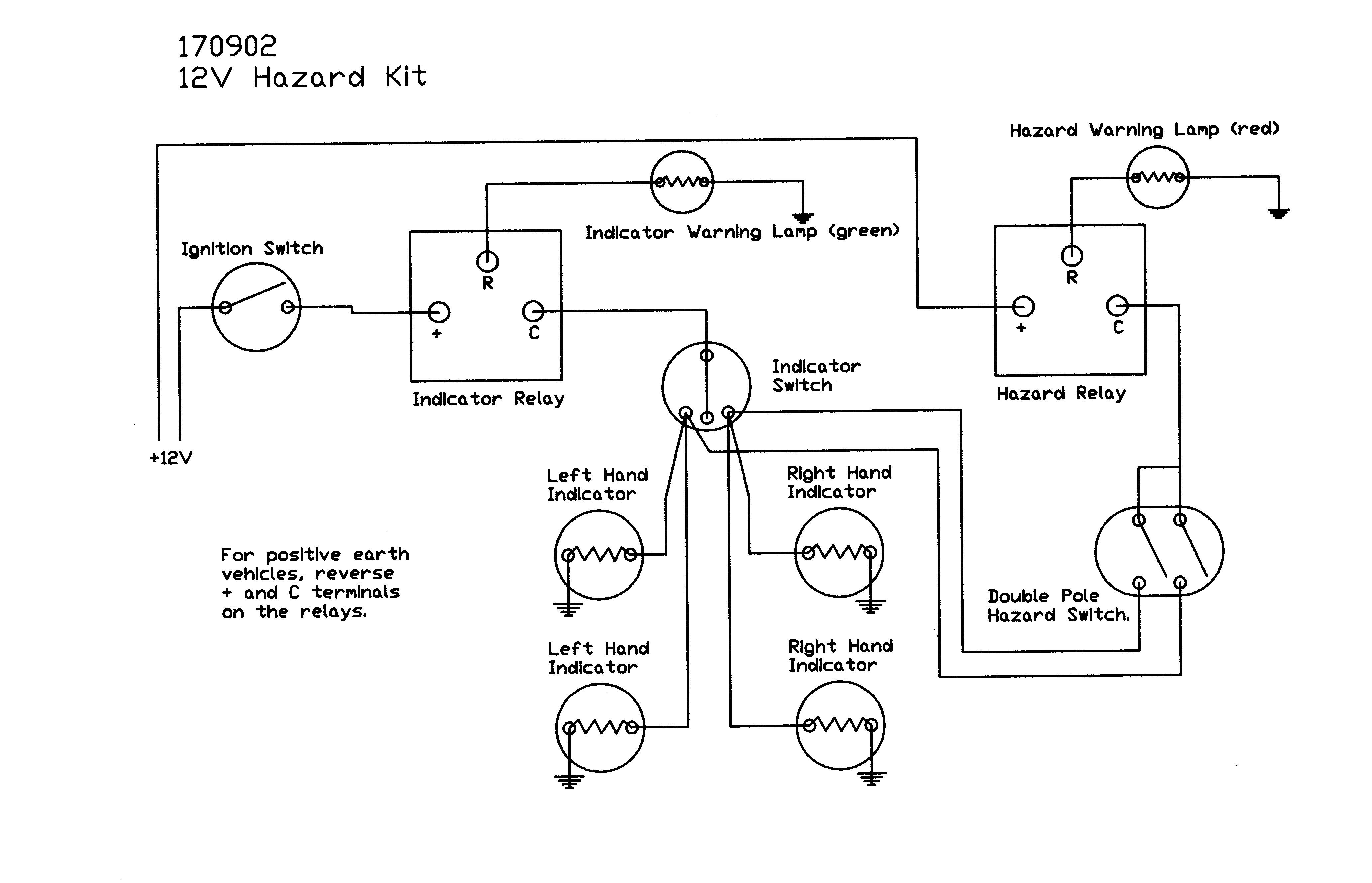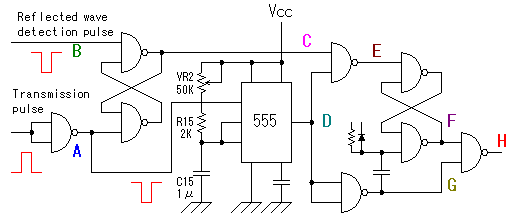
Firefly Lights Circuit

This circuit operates similarly to a standard 555 astable timer, with the distinction that the LED is integrated into the capacitor reset path. Consequently, when pin 7 discharges capacitor C1 to ground, a relatively high current flows through the LED, resulting in an average battery current of approximately 100 µA. When the battery voltage drops significantly, the LED's threshold voltage prevents the capacitor from discharging below the lower threshold. In this scenario, resistor R2 completes the discharge as the output switches to ground potential simultaneously when pin 7 activates. This design allows the circuit to function even with nearly depleted batteries that may be unsuitable for other applications. Diode D1 safeguards against accidental reverse battery voltage. The circuit is inspired by fireflies, which are prevalent in the Northeastern United States and other regions. The green LED mimics the color, flashing duration, and repetition rate of a real firefly (lightning bug). Placing several of these LEDs around ground areas will create a display resembling fireflies, with no synchronization in the flashes. However, the circuit cannot replicate the flight of fireflies, which ascend while flashing and remain still to avoid predation. Additionally, the LED is significantly larger than an actual firefly beetle, which measures approximately 3 x 20 mm. The provided image shows a wire jumper connecting resistor R2 to IC pin 3, which was added after discovering that low voltage operation was inadequate. The PCB file has been updated to rectify this issue. The optional resistor is not utilized in this instance but can be easily incorporated if desired. Component values can be adjusted to achieve the desired performance.
This circuit design utilizes the 555 timer in astable mode, where it generates a continuous square wave output. The integration of the LED into the capacitor reset path enhances the visual output while maintaining low power consumption. The LED will illuminate as the capacitor discharges, creating a flickering effect akin to fireflies. The average current draw of around 100 µA ensures prolonged operation even under low battery conditions, making this circuit suitable for applications where battery life is critical.
The use of resistor R2 plays a vital role in the discharge process of capacitor C1. When the voltage across C1 reaches the lower threshold, R2 assists in discharging the capacitor quickly, ensuring that the LED continues to flash until the battery voltage is critically low. The inclusion of diode D1 is essential for protecting the circuit from potential damage due to reverse polarity connections, which can occur during battery replacement or installation.
The aesthetic appeal of this circuit can be enhanced by arranging multiple units to simulate the natural behavior of fireflies. The random flashing of the LEDs adds to the realism, while the larger size of the LEDs compared to actual fireflies allows for easier visibility in various environments. The design can also be tailored by adjusting component values to modify the flashing rate and brightness of the LEDs, providing flexibility for different applications.
Overall, this circuit combines functionality with an engaging visual display, making it a unique project for hobbyists and professionals alike. The simple yet effective design principles of the 555 timer, combined with thoughtful component selection, result in a reliable and visually appealing circuit that can operate under challenging conditions.It functions like almost any 555 astable timer, except that the LED is inserted into the capacitor reset path so that when pin 7 discharges C1 to common, this relatively high current must pass through the LED. In this way, the average battery current is only about 100uA. When battery voltage becomes very low, the LED threshold voltage prevents dis charging C1 down to the lower threshold ”when this happens, R2 finishes off the discharge because the output switches to ground potential the same time pin 7 turns on ”you will find that this works on almost dead batteries that may be useless for other applications. D1 protects against accidental reverse battery voltage. Fireflies are common through Northeastern US and also in many other parts of the world. This green LED has the same color, flashes at about the same duration and has a similar repetition rate just like a real firefly (lightning bug).
Put a number or these around your grounds and they will truly resemble fireflies ”there will be no synchronization of the flashes. The only thing this cannot do is to fly ”fireflies ascend as they flash, and they do not flash when perched to protect from predators.
Also, this is much larger than the tiny firefly beetle that measures about 3 x 20mm. Visible on the photo is a wire jumper connecting R2 to IC pin 3. This was an afterthought when I found that low voltage operation was poor. The PCB file is updated to fix this. The optional resistor is not used in this case, but is easy to add if desired. You may adjust component values to obtain desired results. 🔗 External reference
This circuit design utilizes the 555 timer in astable mode, where it generates a continuous square wave output. The integration of the LED into the capacitor reset path enhances the visual output while maintaining low power consumption. The LED will illuminate as the capacitor discharges, creating a flickering effect akin to fireflies. The average current draw of around 100 µA ensures prolonged operation even under low battery conditions, making this circuit suitable for applications where battery life is critical.
The use of resistor R2 plays a vital role in the discharge process of capacitor C1. When the voltage across C1 reaches the lower threshold, R2 assists in discharging the capacitor quickly, ensuring that the LED continues to flash until the battery voltage is critically low. The inclusion of diode D1 is essential for protecting the circuit from potential damage due to reverse polarity connections, which can occur during battery replacement or installation.
The aesthetic appeal of this circuit can be enhanced by arranging multiple units to simulate the natural behavior of fireflies. The random flashing of the LEDs adds to the realism, while the larger size of the LEDs compared to actual fireflies allows for easier visibility in various environments. The design can also be tailored by adjusting component values to modify the flashing rate and brightness of the LEDs, providing flexibility for different applications.
Overall, this circuit combines functionality with an engaging visual display, making it a unique project for hobbyists and professionals alike. The simple yet effective design principles of the 555 timer, combined with thoughtful component selection, result in a reliable and visually appealing circuit that can operate under challenging conditions.It functions like almost any 555 astable timer, except that the LED is inserted into the capacitor reset path so that when pin 7 discharges C1 to common, this relatively high current must pass through the LED. In this way, the average battery current is only about 100uA. When battery voltage becomes very low, the LED threshold voltage prevents dis charging C1 down to the lower threshold ”when this happens, R2 finishes off the discharge because the output switches to ground potential the same time pin 7 turns on ”you will find that this works on almost dead batteries that may be useless for other applications. D1 protects against accidental reverse battery voltage. Fireflies are common through Northeastern US and also in many other parts of the world. This green LED has the same color, flashes at about the same duration and has a similar repetition rate just like a real firefly (lightning bug).
Put a number or these around your grounds and they will truly resemble fireflies ”there will be no synchronization of the flashes. The only thing this cannot do is to fly ”fireflies ascend as they flash, and they do not flash when perched to protect from predators.
Also, this is much larger than the tiny firefly beetle that measures about 3 x 20mm. Visible on the photo is a wire jumper connecting R2 to IC pin 3. This was an afterthought when I found that low voltage operation was poor. The PCB file is updated to fix this. The optional resistor is not used in this case, but is easy to add if desired. You may adjust component values to obtain desired results. 🔗 External reference
Warning: include(partials/cookie-banner.php): Failed to open stream: Permission denied in /var/www/html/nextgr/view-circuit.php on line 713
Warning: include(): Failed opening 'partials/cookie-banner.php' for inclusion (include_path='.:/usr/share/php') in /var/www/html/nextgr/view-circuit.php on line 713





